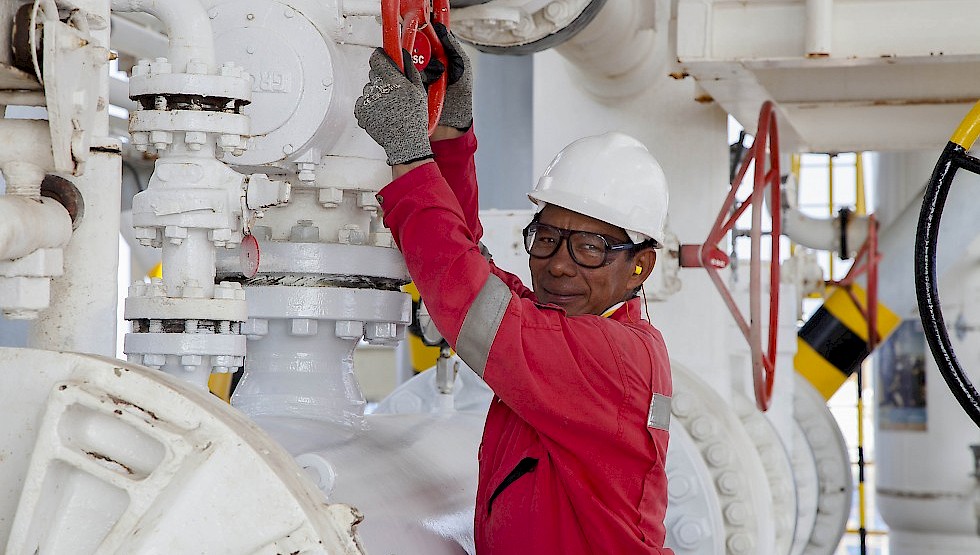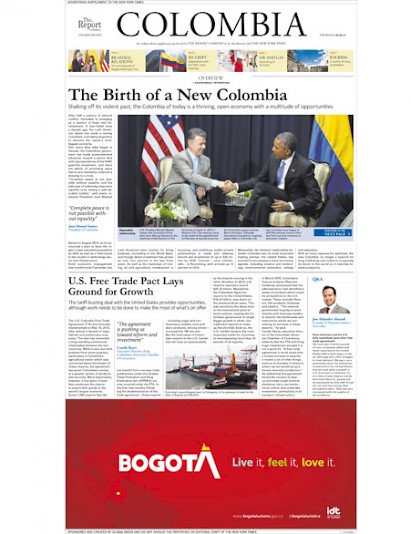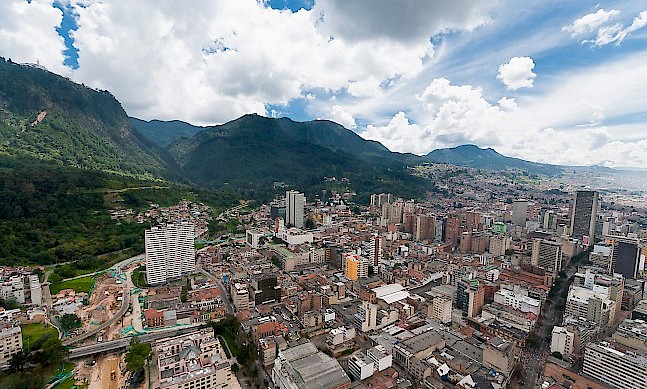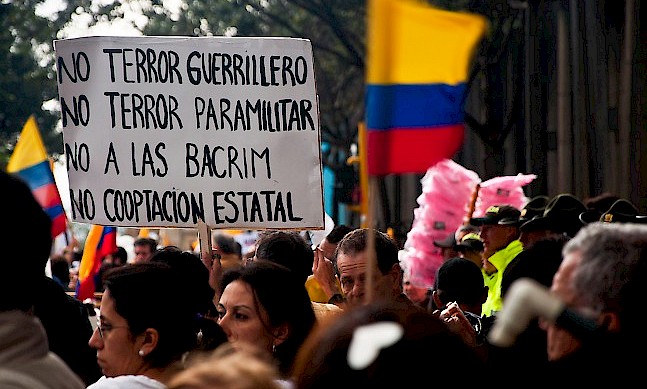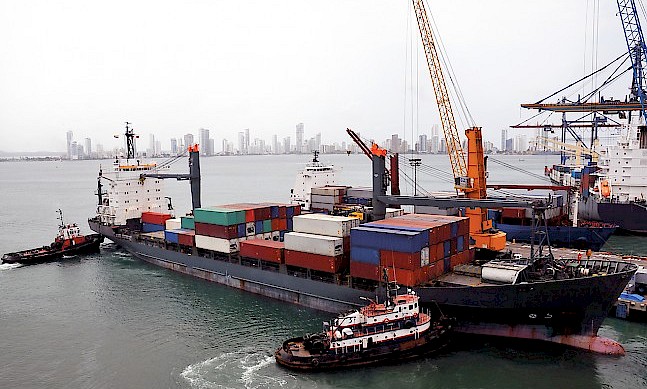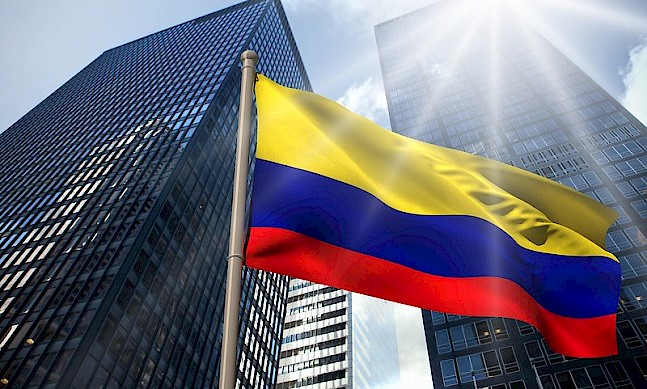Modern infrastructure is seen as the basis for turning around the industry.
As Colombia goes full steam ahead in hydrocarbon development, there remain some important hurdles to overcome if the country is going to be able to take full advantage of its natural resources.
National oil major Ecopetrol, which is the fourth-largest largest oil company in Latin America and ranks among the top 50 in the world, believes there are at least 47 billion barrels in potential reserves in the country, and perhaps even more because a large portion of Colombia remains unexplored. New discoveries in the existing Cusiana, Cupiagua, Cano Limon, La Cira-Infantas and Chuchupa-Ballena fields are thought to hold a million more barrels, but getting the oil out of these remote regions presents a major logistical challenge.
“Our transportation capacity currently roughly equals our output. It is clear we are deficient in terms of road networks,” explains Javier Betancourt, director of the National Hydrocarbons Agency (ANH). Fortunately, the government is working on an aggressive road construction effort, the results of which Betancourt estimates will be evident in the next three to four years. “For the oil industry, three to four years is the short term. By the time the companies in this latest round begin their exploration, we think there will already be a difference in road transportation capabilities. There is great potential for growth in transportation networks to match our potential growth in production. There will probably be a mismatch between both for a while, but in the mid-term they will even out,” he added.
Work is also underway to boost Colombia’s refining capacity. The country’s newest refinery, in the department of Meta, is tipped to start operations by the end of 2015. Ricardo Rodriguez, general manager of Llanopetrol, which will operate the plant, predicted that between 40,000 and 45,000 barrels of heavy crude will be refined per day from the start, making up about 10 percent of national production.
“There are three things that define us: our courage,
our smile and our dignity.”
Ricardo Rodriguez General Manager of Llanopetrol
Tweet This“Thirty years ago, nobody would give you a peso for heavy crude, but these days interest in it has grown because there aren’t any light crude reserves left, which means that the heavy crude needs to be transformed,” he said.
Llanopetrol estimates that within 10 years the Meta plant will be refining up to 240,000 barrels per day, which will generate a healthy profit for Colombia since the current domestic daily demand is around 150,000.
To transport this excess, the Pipeline Pacific project, which could be ready as early as 2018, will connect the Llanos region with the port near Buenaventura that will take crude on a 466-mile journey to the Pacific coast. Betancourt also points to another interesting project underway to revitalize the Magdalena River as a major waterway.
The recent precipitous fall in oil prices has hit the sector hard around the world. Investors are having to reassess the profitability of potential prospects, and Colombia is no exception. But offshore exploration in the country has seen unprecedented interest, and foreign oil companies such as Brazil’s Petrobras, Spain’s Repsol, Shell and U.S. major Anadarko are already operating in and around the country’s Caribbean and Pacific coasts.
What’s more, a consortium formed between Ecopetrol, Petrobras and Repsol recently reported a natural gas find at the Orca-1 exploratory well in the Tayrona-1 block in the Caribbean. “This discovery means very positive news for our country, breaking paradigms and confirming the potential of the Colombian offshore Caribbean basin,” said Betancourt. “This is the first offshore discovery in Colombian for many years and we certainly hope there are more soon to come.”
“There is a great deal of opportunity in water injection and in fracking because that is an activity which demands
large volumes of high-quality water.”
Carlos Flores General Manager of Tecca
Tweet ThisHowever, not everyone is happy about oil exploration, and working with communities in rural areas – especially in those where activists have opposed drilling – is top of the agenda not only for the government but for the industry itself.
“When BP left [the oil-rich area of Yopal in Casanare], the region was left with nothing,” said Llanopetrol’s Rodriguez. “Today Yopal is a dry desert, and poverty levels are among the highest in the country. That cannot happen again.” To make sure of this, the Oil Municipalities Association has been set up to receive complaints and demands from area residents and carry out studies into where social investments need to be made.
Still more needs to be done to ensure Colombia gets the full advantage of the oil and gas it has within its territory. “Investment into oil doesn’t trickle down because the drills used aren’t Colombian, and the personnel tends to come in from outside because we have a lack of highly qualified workers in the sector,” said Luis Salcedo, a partner at Dinamo Consultores, an investment bank which works to develop Colombia’s natural resources.
The Santos government is taking steps to teach the workforce, and ensure that oil company profits are channeled back into communities. With ongoing infrastructure development programs, given time, Colombia looks set to reap the benefits of its oil bonanza.
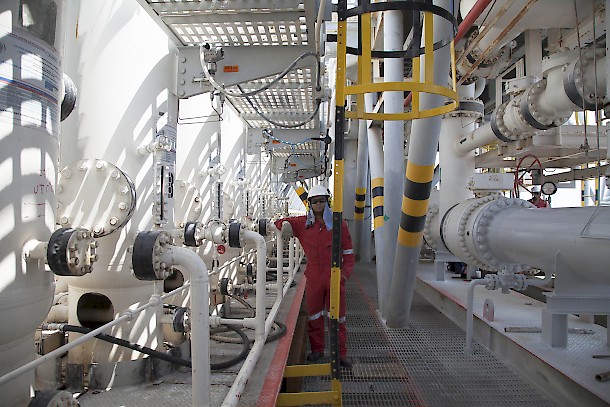 Photo: ANH
Photo: ANH


